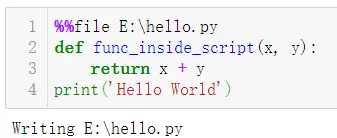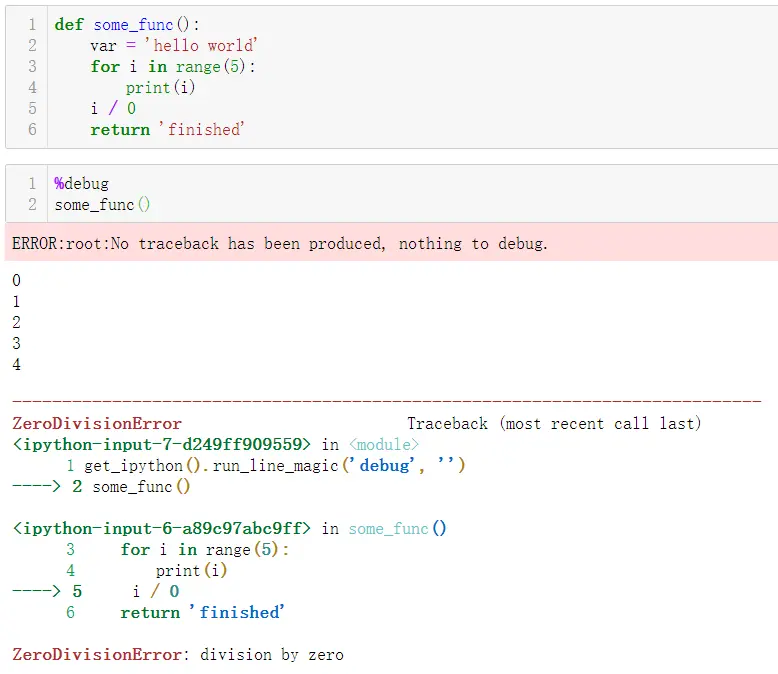众所周知,Jupyter notebook是一个交互式的Python shell,也就是IPython的封装版,非常适合用来进行数据分析和机器学习。
Jupyter notebook中有很多实用且鲜为人知的功能,可以实现有趣的操作,这次举5个简单的例子。
1、脚本代码写入本地文件
%%file方法可以将脚本代码写入本地Py文件。
%%file E:hello.py
def func_inside_script(x, y):
return x + y
print('Hello World')

2、执行Py文件
在notebook中可以直接执行Py文件,通过%run方法来实现。
%run hello.py

3、监测代码运行时间
可能你的代码需要精确的时间控制,那么%timeit方法可以帮到你。
%timeit [x**2 for x in range(100)]

4、使用系统命令行
在windows中,使用命令行需要打开cmd窗口,如果你使用notebook,则可以通过!方法轻松执行命令行代码。
# 新建文件夹
my_dir = 'new_dir'
!mkdir $my_dir
5、快速debug
bug是让人头疼的事,在notebook中可以轻松进行debug,使用%debug命令即可。
def some_func():
var = 'hello world'
for i in range(5):
print(i)
i / 0
return 'finished'
%debug
some_func()

Jupyter notebook中还有很多有趣的魔法命令,感兴趣可以多摸索下。

© 版权声明
本平台(www.cooy.cn)的一切软件、教程及内容信息仅限用于学习和研究,付费仅为收集整理归类费用;
不得将上述内容用于商业或者非法用途,否则一切后果用户自行承担负责。本平台资源、内容、信息均来自来自用户上传,版权争议及其他问题与本平台无关。
您必须在下载后的24个小时之内从您的电脑或手机中彻底删除上述下载内容,如果您喜欢该程序或内容,请支持正版以获取更好的服务。我们非常重视版权问题,如有侵权请发送邮件至下方邮件(655465@qq.com),敬请谅解!
如发现违法违规内容,请联系下方邮箱举报,我们收到后将会第一时间处理。
THE END







暂无评论内容